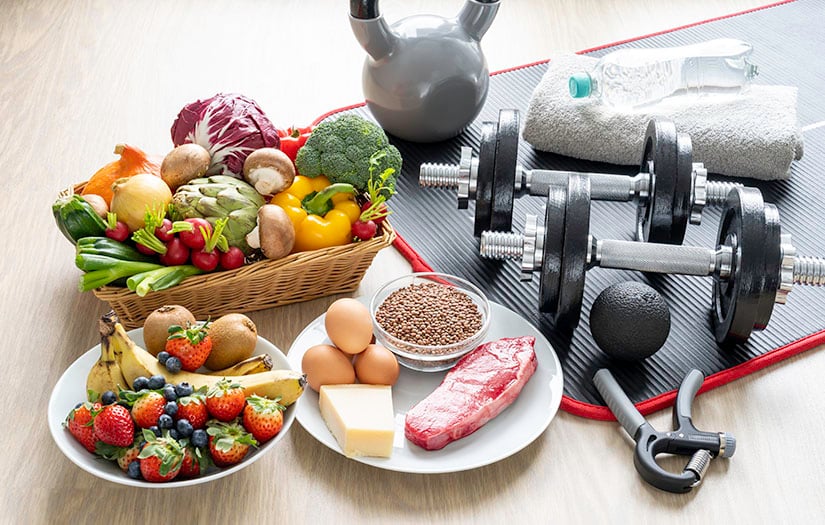Armed sports nutrition
You can naturally consume quercetin in red onions, tomatoes, apples, and blueberries. If you take a supplement, you should take up to 1000mg per day. Consuming it along with vitamin C can increase its effectiveness sportsbetting.ag promo code.
“Getting enough protein after training can help with repairing and building muscle tissue,” Ansari says. “Athletes tend to have higher protein needs than the average person. Supplementation, like protein powder or shakes, can help fill the gaps if they are unable to meet all of their needs through food.”
You can consume omega-3s naturally in fish if you wish to eat your omega 3’s through natural food consumption. If you take a supplement, you should get at least 90 mg a day. According to some health experts, like Dr. Andrew Huberman, you should aim for 2400 to 3000 mg.
A review of research published in January 2021 in the Journal of the International Society of Sports Nutrition found that caffeine can improve aerobic endurance and athletic performance when consumed in doses of 3 to 6 milligrams per kilogram of body mass. This is the equivalent of 273-545 milligrams for a 200-pound athlete. For reference, a cup of brewed coffee contains around 100 milligrams.
Sports nutrition degrees
To become a certified sports nutritionist, one must complete continuing education requirements and pass a certification exam with a satisfactory score (typically in the 80-85% range). The benefit of being a certified sports nutritionist is that it’s a way to communicate to clients and potential clients that one possesses a higher level of knowledge and skills as it pertains to nutrition, thus enabling you to perform the duties of your job to a higher standard.
The essential role of a sports nutritionist is to teach athletes how to utilize nutrition to help maximize their ability to perform on the field of play. However, the job is far more complex than simply suggesting what foods an athlete should eat and what foods they should avoid.
After college graduation, aspiring sports nutritionists generally enter into an internship program to receive several hundred hours of supervised training. Some internship programs can last up to 12 months. Many colleges and universities offer graduate programs designed to give students the opportunity to specialize in sports nutrition.

To become a certified sports nutritionist, one must complete continuing education requirements and pass a certification exam with a satisfactory score (typically in the 80-85% range). The benefit of being a certified sports nutritionist is that it’s a way to communicate to clients and potential clients that one possesses a higher level of knowledge and skills as it pertains to nutrition, thus enabling you to perform the duties of your job to a higher standard.
The essential role of a sports nutritionist is to teach athletes how to utilize nutrition to help maximize their ability to perform on the field of play. However, the job is far more complex than simply suggesting what foods an athlete should eat and what foods they should avoid.
After college graduation, aspiring sports nutritionists generally enter into an internship program to receive several hundred hours of supervised training. Some internship programs can last up to 12 months. Many colleges and universities offer graduate programs designed to give students the opportunity to specialize in sports nutrition.
Sports nutrition database
Based on a comprehensive review and critical analysis of the literature regarding the effects of sodium bicarbonate supplementation on exercise performance, conducted by experts in the field and selected membe…
Furthermore, digestion control applications are currently being developed. For example, FoodMarble ( accessed on 15 September 2021) developed the FoodMarble AIRE, a portable breath monitor with connected app. The FoodMarble AIRE allows the analysis of the digestion process in real-time.
Evaluating athlete nutrition is challenging due to the influence of periodic exercise and other sport-specific factors such as frequent overeating, large portion sizes, and widespread use of sports nutrition and supplements . Advances in technology may make it easier to automate certain aspects of nutritional assessment, reduce costs, and reduce respondent burden . However, existing online nutritional applications tend to focus only on assessing the macronutrient and/or micronutrient intake and have often not been validated among athletes.
International society for sports nutrition
Breen L, Philp A, Witard OC, Jackman SR, Selby A, Smith K, et al. The influence of carbohydrate-protein co-ingestion following endurance exercise on myofibrillar and mitochondrial protein synthesis. J Physiol. 2011;589(Pt 16):4011–25.
Hulmi JJ, Kovanen V, Lisko I, Selanne H, Mero AA. The effects of whey protein on myostatin and cell cycle-related gene expression responses to a single heavy resistance exercise bout in trained older men. Eur J Appl Physiol. 2008;102:205–13.
Farnfield MM, Breen L, Carey KA, Garnham A, Cameron-Smith D. Activation of mtor signalling in young and old human skeletal muscle in response to combined resistance exercise and whey protein ingestion. Appl Physiol Nutr Metab. 2012;37:21–30.
Kerksick CM, Wismann-Bunn J, Fogt D, Thomas AR, Taylor L, Campbell BI, et al. Changes in weight loss, body composition and cardiovascular disease risk after altering macronutrient distributions during a regular exercise program in obese women. Nutr J. 2010;9:59.
Kinsey AW, Eddy WR, Madzima TA, Panton LB, Arciero PJ, Kim JS, et al. Influence of night-time protein and carbohydrate intake on appetite and cardiometabolic risk in sedentary overweight and obese women. Br J Nutr. 2014;112:320–7.